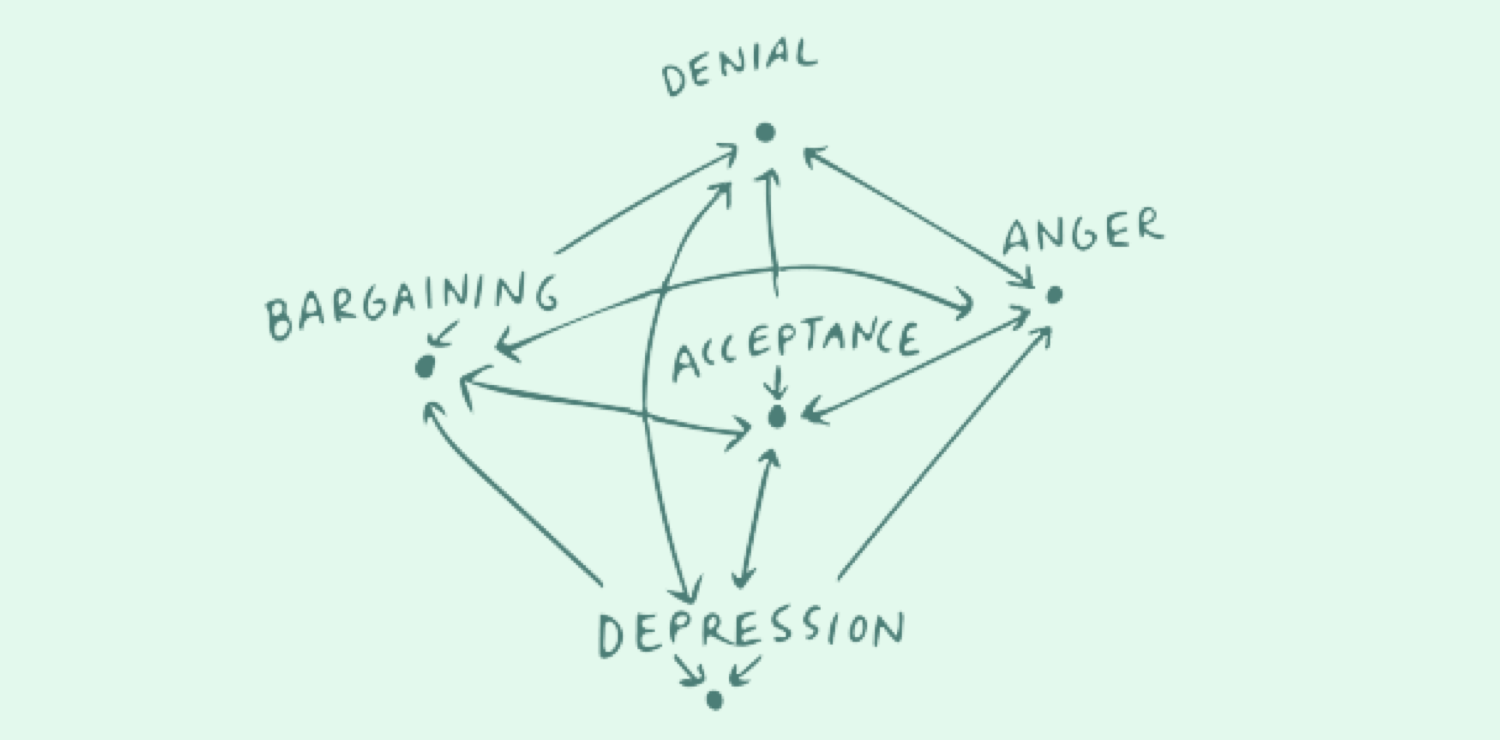The "five stages": updating the paradigm
The idea of The Five Stages of Grief was initially created by a Swiss psychiatrist named Elisabeth Kübler-Ross, who worked with people facing terminal illnesses. She introduced the model in her book On Death and Dying in 1969, and it gave words and structure to something that was ambiguous at the time. Soon this became adapted as a way of thinking about grief more generally, and it has since become a commonplace belief.
Here is what we’re taught that grief looks like:
It’s linear. There’s a clear start and an end. You move through each stage in order and once you reach Acceptance, the process is complete. Grief is over, you have accepted the loss, and you’re back to your old self. Never sad again.
If you’ve been through grief, you understand that this isn’t an accurate representation. In reality, it’s nonlinear and you never really stop grieving even if you accept that the loss has occurred. But this linear model is so engrained in our culture that it poses challenges to grievers and those in a griever’s orbit. It’s this flawed understanding of grief that makes people say things like:
“When you’re done grieving…”
“When she’s back to normal…”
“They just have to reach acceptance and move on.”
This perception is harmful to our understanding of the grieving process, and it requires active education to debunk it.
In reality, grief looks a little more like this:
It flows in all directions, and there’s no clear end point. The intensity of your feelings fluctuates. Even if you “reach” some semblance of Acceptance, you may still have moments of Anger or Depression. You may experience all of the stages in one day and the next day move on to one in particular. Sometimes you skip stages. Sometimes you have month-long stretches of one stage. It ebbs and flows and is anything but linear. And especially with a big loss, grief persists in some form throughout the rest of a person’s life.
I think Cheryl Strayed summed this up perfectly in one of her Dear Sugar advice columns, The Black Arc of It, on the topic of the loss of her mother and a friend’s mother, where she describes grief as a lens on her life—it’s there, during events big and small.
“[…] there isn’t one good thing that has happened to either of us that we haven’t experienced through the lens of our grief. I’m not talking about weeping and wailing every day (though sometimes we both did that). I’m talking about what goes on inside, the words unspoken, the shaky quake at the body’s core. There was no mother at our college graduations. There was no mother at our weddings. There was no mother when we sold our first books. There was no mother when our children were born. There was no mother, ever, at any turn for either one of us in our entire adult lives and there never will be.”
Grief is a cycle. It evolves and continuously unfolds, and we understand it more when we reflect back on it. That may not be how we first understood it, but that’s how it is. Once we know that, we can be kinder to people who are grieving, and we can encourage people who are grieving be kinder to themselves.
How have you experienced the “five stages” of grief? What do you think it’s missing?


